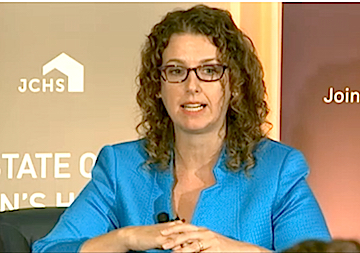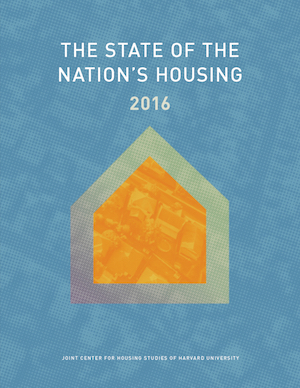
There’s bad news and good news concerning affordable housing in the United States, according to speakers at a Wednesday press conference where the latest “State of the Nation’s Housing” report was released by the Harvard Joint Center for Housing Studies.
The bad news, according to Diane Yentel, president and CEO of the National Low Income Housing Coalition, is that programs to create affordable housing for the lowest-income Americans, and to increase housing affordability for them, are not being funded at a level that can meet the need. “This is a multibillion dollar problem, and the solutions would cost just about as much,” she said.
The good news, Yentel said, is that solutions to meet Americans’ affordable housing needs already exist. She noted the newly funded national Housing Trust Fund, the Section 8 Housing Choice Voucher program, the Low Income Housing Tax Credit program, the HOME Investment Partnerships Program and Community Development Block Grants.
The country spends about $200 billion annually to help Americans rent or buy homes, Yentel said, adding that approximately three-fourths of subsidies go to higher-income homeowners through tax benefits such as the mortgage interest deduction. The remaining one-fourth of the amount is used to assist the lowest-income renters.
“We just need to spend [funds] more effectively and look at how do we target limited resources toward those with the greatest need,” Yentel said.
Panelists — who in addition to Yentel included Chris Herbert, managing director of the Harvard Joint Center for Housing Studies; Stuart Miller, CEO of construction company Lennar Corp.; and Newton, MA, Mayor Setti Warren, chairman of the Community Development and Housing Committee of the U.S. Conference of Mayors — agreed that a comprehensive national housing strategy is needed to address housing needs for seniors and middle-income and low-income Americans. Such a strategy, Herbert said, would “become sort of a North Star for how we aim as a country toward achieving our goals.”
 Highlights of the report:
Highlights of the report:
-
The rental market continues to drive the housing recovery, with more that 36% of U.S. households choosing to rent in 2015, the largest share since the late 1960s. Rental demand has increased across all age groups, income levels and household types, with large increases among older renters and families with children.
-
The number of households paying more than 30% of their income for housing has declined across all age groups but especially among younger homeowners. Homeowners aged 75 or more years, however, are among the most cost-burdened groups, with their share at 29% compared with 24% for households aged fewer than 45 years. With aging baby boomers swelling the ranks of older homeowners and larger shares of households carrying mortgage debt into retirement, the problem of housing cost burdens among the elderly is likely to grow, the authors state.
- Much of the significant household growth that happens over the next decade and beyond will occur among the retirement-aged population, with the number of households aged 70 or more years projected to increase by more than 8 million, or more than 40%, to lift the share of older households to approximately 21% by 2025. The growing share of older households will mean further declines in residential mobility and housing turnover, potentially putting the already tight market for existing homes under additional pressure. Also, as these older adults age in place in greater numbers, older households not only will contribute to a larger share of remodeling spending; they also will increase demand for different types of projects, such as accessibility improvements. Additionally, older households that do move likely will seek units that are smaller and less costly to maintain — the same types of housing young adults want to rent or buy as their first homes. And as the number of older single persons living alone climbs, a significant increase in the need for in-home healthcare and supportive services may occur.



